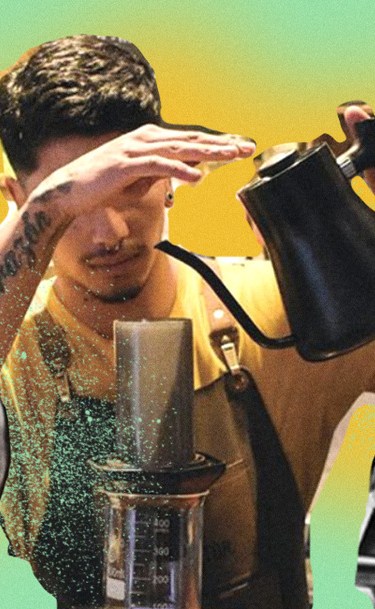As quarantine drags on and days blend together, the promise of a warm, delicious cup of coffee may be the last sure-fire thing to get us out of bed in the morning. While walking by our favorite (perhaps closed) coffee shops may induce nostalgia for better times had with our perfectly crafted lattes or cappuccinos, all this time at home provides a distinct opportunity to discover one’s untapped potential. In this case, the potential to make a wonderful (dare we say perfect) brew of coffee at home.
Experts believe this quarantine period can provide coffee aficionados with the chance to take their passion to a new level.
“The benefits of making coffee at home are that you come into direct contact with the coffee and that you get to experiment with making coffee to taste,” says Juan Espinel, the award-winning coffee-roaster at the Colombian specialty shop Café Cultor.
“Making coffee is about trial and error,” says the 25-year-old specialist, who won Colombia’s first coffee-roasting championship in 2019. “My advice is to keep going if the first cup you make doesn’t taste good. Don’t judge the coffee, rather make changes in the preparation to see if it improves.” This could imply a change in coffee-to-water ratio or the brewing time.
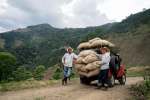
Still, the easiest way to enhance a home-made brew is to buy quality coffee beans.
We consulted three experts from Colombia—the world’s third-largest producer of coffee and the top seller of coffee to the United States in 2018—to figure out what it takes to make a perfect cup of joe en casa.
“Coffee is like wine.”
In 2003, the Colombian government reversed a decision to export their best coffee abroad and leave the leftovers for internal consumption. A culture of specialty coffee exploded in all major cities since then, inspiring an unprecedented number of professional baristas, coffee-roasters and coffee tasters. All experts interviewed agreed that there are a few simple steps a consumer can take to ensure that the coffee they choose is the best they can buy.

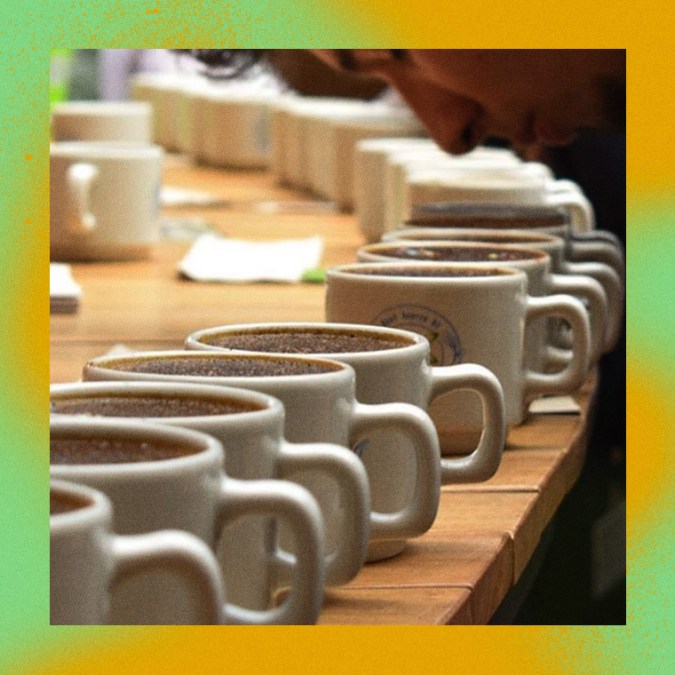
Firstly, if buying Colombian coffee, the label on the packaging should read 100% Colombian coffee. That will guarantee that the product is not a blend of various imported beans and that it meets the standards set by Colombia’s National Coffee Federation, explains Luis Fernando Velez—founder of the café Amor Perfecto and a pioneer in Colombia’s gourmet coffee industry. It’s important to note here that the coffee bean is a fruit seed and that the best coffee is made from the finest crops. Secondly, opt for whole beans which you can ground at home. This promises that the coffee will be more fresh and aromatic upon drinking. Lastly, Espinel emphasized that roast date, which appears on the label, should be recent. Otherwise, it might lose flavor.
On the packaging, you’ll also find a label that indicates the distinct tastes that crop of beans contains. It can range from acidic to mild to bright and evoke notes of caramel or chocolate or nuts. Of course, which type of coffee one selects at the supermarket comes down to personal preferences.
“Coffee is like wine,” says Velez, alluding to the hundreds of variations in aroma and taste a concoction of coffee beans can produce. While 200 aromatic compounds have been found in the entire wine catalog, coffee can emit at least 850.
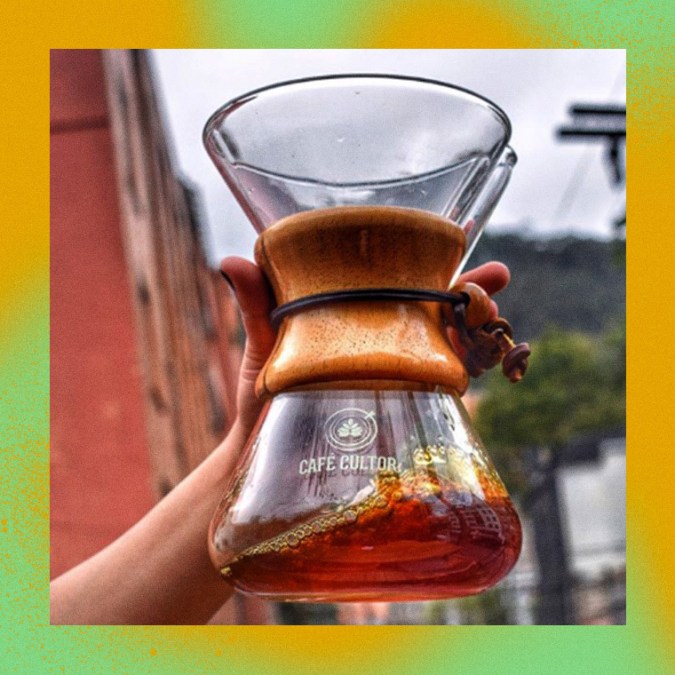
Discovering one’s palate is a process. It also won’t develop overnight. For Antonio Pardo, co-founder of Espíritu de Paz, an award-winning coffee cooperative led by ex-combatants signed onto the peace process, this shift required time and studying at a public institute. But Pardo, assures this can also be accomplished by making small changes in the morning, including switching out a frothy, sugar-saturated drink for a simple coffee without any enhancers. “You have to drink it without sugar to note the differences between one coffee and another because sugar overshadows coffee with its sweetness,” says Pardo, adding that a good exercise would be to do a “cupping” or tasting of different coffee profiles. The difference between a poor and an excellent bean will be evident. “With good coffee, you’ll want to keep drinking. With a bad coffee without sugar, you’ll be good with just one cup.”
Of course, all the extra perks of quality coffee come with heftier prices. But Pardo notes that an additional dollar paid on a package of coffee goes to the family-owned farms that harvest it. In Colombia alone, there are 555,000 families that cultivate coffee. When these families are paid fair prices for quality coffee, they can live a comfortable, dignified life in the countryside. Otherwise, they face displacement to the cities when coffee cultivation is unsustainable.
Once you’ve got a fine package of top-tier coffee in hand, all experts recommend you make a filtered cup of coffee. In other words, coffee made from hot water sifting through a filter containing coffee grounds. Various coffee makers will do the trick. Velez recommends the AeroPress—a syringe-looking contraption that prices around $30.
“This system permits one to make an infinite number of variations of coffee, is affordable, and is indestructible. It allows you to make strong coffee, weak coffee, espressos, intense, less intense. This, for me, is the best way to make Colombian coffee.”
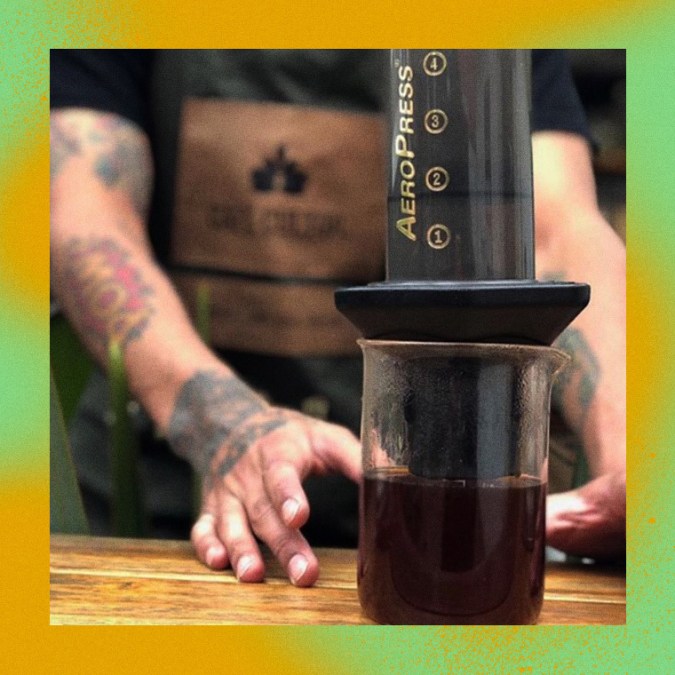
For Pardo, a V60 coffee dripper is ideal. Espinel opts for the V60 as well as a Chemex or a Melitta. The V60 is named after the V shape of the filter, molded in a perfect 60-degree angle. It’s relatively cheap (around $25) but the taste is refined. “The coffee tends to have a cleaner taste, it’s more agreeable, more bright, and delicate. You’ll be able to perceive more details,” says Espinel.
There is a world of knowledge behind every cup of coffee, assured Espinel. In his journey from barista to professional coffee roaster and taster, Espinel spent five years absorbing every piece of information on coffee he could find. The process of learning more about coffee’s origins and how it’s made will only become more addicting. “[You’ll] want to know more,” he says. “Every time.”
